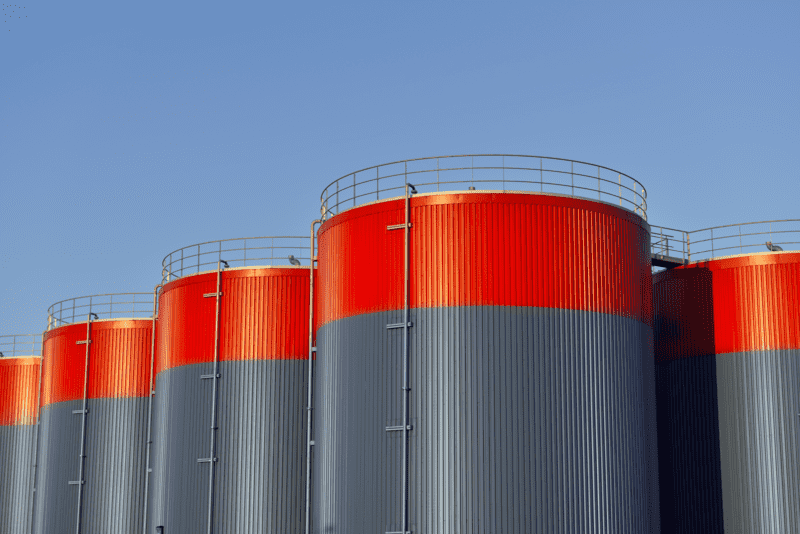
Israel's latest strikes on Iran mark a new escalation, directly hitting Iran's economic lifelines, raising concerns about further attacks on critical infrastructure like the Kharg Oil Terminal, which handles over 90% of Iran's oil exports.
The strikes appear to be targeted at Iran's domestic energy needs for now, but the conflict risks major disruption to global oil markets if Iranian exports are curtailed significantly or the conflict widens regionally.
"Oil price risk premiums could rise sharply if Iran conducts broader retaliatory attacks (e.g., to targets other than in Israel)," oil analysts at S&P Global Commodity Insights said in a note. "Escalation of tensions could also boost freight rates and tanker insurance premiums, narrow the Brent-Dubai spread and hurt refinery margins, particularly in Asia. If Iranian crude exports are disrupted, Chinese refiners, the sole buyers of Iranian barrels, would need to seek alternative grades from other Middle Eastern countries and Russian crudes."
The following are key facts about the Iran-Israel conflict and its potential impact on energy markets:
Infrastructure
Israel launched airstrikes targeting multiple key Iranian oil and gas facilities, including the South Pars Gas Field (Phase 14), Asaluyeh oil refinery, Kangan port and oil depots near Tehran.
The South Pars gas field, the world's largest gas field and crucial to Iran's domestic gas supply, suffered a fire and partial suspension of gas production, temporarily halting around 12 million cu m/day. The fire at South Pars has been extinguished, but production remains offline pending repairs.
The Fajr Jam gas processing plant, with a capacity of 125 million cu m/day, treats gas from the onshore Nar and Kangan fields and from phases 6-8 of South Pars, representing a substantial portion of Iran's gas processing capability.
Iran's crude and condensate production stands at roughly 4 million b/d, with exports near 1.5 million b/d; disruption to these facilities risks significant export losses.
Phase 14 of South Pars processes 56.6 million cu m/day of sour gas and produces 75,000 b/d of gas condensates, making it a significant component of Iran's gas infrastructure that could face further targeting.
The Shahran fuel storage depot near Tehran was on fire on June 14, though Iran's oil ministry said that supplies had been reduced in anticipation of attacks.
Iran's Tehran oil refinery remains operational and unaffected by Israeli strikes as of June 15, with the National Iranian Oil Products Refining and Distribution Co. reporting that no refineries have been hit.
Iran's oil export terminals at Kharg Island, which handle the majority of the country's crude exports, remain potential high-value targets that could significantly impact Iran's ability to generate revenue.
Regional maritime infrastructure, including ports and loading facilities in the UAE, Saudi Arabia and Qatar, could face collateral risks if the conflict expands to include attacks on shipping in the Persian Gulf.
At Israel's Haifa refinery, strikes caused damage to pipelines and transmission lines that run between facilities. Crude refining units at the 197,000 b/d Bazan complex continue to operate, but some downstream facilities have been shut down.
The Haifa refinery produces both petroleum and petrochemical products, some of which are exported to Mediterranean markets, including Cyprus, Turkey and Greece. The refinery supplies about 65% of transport diesel and 45% of gasoline consumed in the domestic market.
Trade
The conflict has heightened fears of disruptions to oil exports from the Middle East, particularly through the Strait of Hormuz, a vital chokepoint where about 20% of the world's oil and LNG transits daily. However, many experts consider a prolonged Strait of Hormuz disruption less likely due to US naval presence.
Iran's oil exports of around 1.5 million b/d could be directly impacted by Israeli strikes on its energy infrastructure, potentially removing significant volumes from global markets already dealing with tight supply conditions.
Israeli gas exports to Egypt and Jordan have been suspended amid the conflict, reflecting broader regional trade disruptions.
Houthi attacks in the Red Sea since late 2023 have already forced many ships to reroute around the Cape of Good Hope, adding approximately two weeks to Asia-Europe voyages and increasing shipping costs substantially.
Any Iranian closure of the Strait of Hormuz would affect not only its own exports but also those of Saudi Arabia, the UAE, Kuwait and Qatar, potentially removing over 17 million b/d of crude oil from global markets.
Regional refineries dependent on crude oil shipments through these waterways could face feedstock shortages, potentially leading to product supply disruptions across Asia, Europe and North America.

Natural gas flows could be severely impacted, with Qatar's LNG exports of approximately 77 million mt/year (representing about 20% of global LNG supply) potentially unable to reach key markets in Asia and Europe.
Alternative supply routes for Middle Eastern oil and gas are limited, with pipeline capacity insufficient to offset potential maritime disruptions through the Persian Gulf and Red Sea.
Prices
Oil prices surged sharply following the strikes, reflecting increased geopolitical risk and supply disruption fears.
Oil futures rallied on the open late June 15 as Iran and Israel continued to trade attacks, with Iran threatening to attack ships in the Persian Gulf and Red Sea. At 2200 GMT, NYMEX front-month crude opened $3.56 (5%) higher at $76.54/b. ICE front-month Brent opened at $78.31/b, up $4.08 (5%).
Brent crude futures rose by over 7.6% on June 13, settling near $74.65/b, with intraday peaks above $75, the highest since early April. US West Texas Intermediate crude similarly jumped about 7% to $73.42/b.
Platts, part of Commodity Insights, assessed the global crude oil benchmark Dated Brent at a fresh two-month high of $75.19/b on June 13, up $4.34 day over day.
Oil analysts at Goldman Sachs warned that if the conflict escalates further to hit Iran's oil export infrastructure, oil prices could exceed $90/b.
Natural gas prices in Europe and Asia could see significant increases if Qatar's LNG exports are disrupted, which is particularly concerning for Europe as it continues to reduce dependence on Russian pipeline gas.